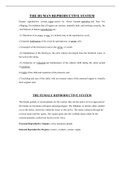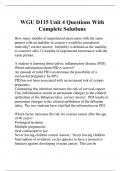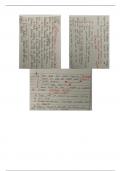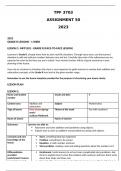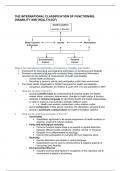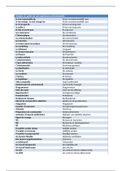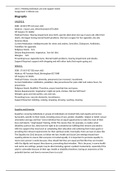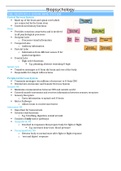(http://thebrain.mcgill.ca/)
Brain – behavior link
I. Methodological approaches
- Neuroanatomical substrates of behaviour
- Microdialysis (+ other techniques to look at neurochemical & behavioural correlates)
- Evaluation of brain activity
- Neurocognitive testing
- Pharmacological modulation behavioural alternations/ neuropsychopharmacology
II. Normal behavioural states
- Ingestive behaviour
- Emotions (facial expression & recognition of emotions and neurobiology of happiness)
- Personality – Novelty seeking behaviour – addiction
- Learning & memory
- Sleep and circadian rhythms
- Cerebellum: motor function and language/communication
- Frontal lobe function
III. Pathological behavioural state
Behavioural aspects and CNS control of
- Aggression, Anxiety , Pain
- BPSD/NPS
- + also included in several seminars of part II. e.g. eating disorders, drug abuse, speech disorders
Historical introduction is no exam material!
CHAPTER 1: PERSONALITY, NOVELTY SEEKING, ADDICTION
1. Personality
Temperament
- Inborn form of human nature
- Individual differences in strength of drives underlying basis emotions (like fear, anger, disgust,
surprise)
- Predisposition
- Hardwired in from birth
Character
- Emergent form of human nature
- Individual differences in a person’s goals and values
- Develops through the interaction of temperament and environment !
- Set of habits we acquire over lifetime
- Disposition
1
, Already a long time ago people were interested in personality and wanted to label people
- E.g. Hippocrates: “ 4 humors” & the influence of these humors in the functioning of the body
- E.g. Keirsey’s
o Develop the temperament sorter
o Described 4 temperaments that are linked to the underlying Jungian types (described by
Myer)
o Subcategories in each of the 4 types, described by famous people
o Used in the US by companies to see if the characters of employees matches the job
1.1. Personality: definition
Gordon W. Allport, psychologist
- Founding figures of personality
- Tried different approached throughout his career to describe personality:
1) Omnibus definition
1937 “Personality is everything that makes you an individual. It is the integration and interaction of your
genetic inheritance, your experience, and your ways to relate the two”
+ Combines predisposition (temperament) and experience and how the environment influences your
personality
− Useless definition according to Allport
− No guidance e.g. not defined how to distinguish different personalities
2) Trait or integrative/configurational approach
“A trait is a dynamic trend of behaviour which results from the integration of numerous specific habits of
adjustment, and which expresses a characteristic mode of the individual's reaction to his surroundings”
“A trait is a predisposition to act the same way in a variety of situations. Traits are real, not concepts; they are
as real as height, weight or eye color”
3) System or Hierarchical approach
→How personality is built up
“Personality contains three layers or components: the persona, the self, and the unconscious processes“
• The Persona = external layers = mask for different occasions, what the environment sees
• The self = private ego behind the mask
o dominates conscious experience
o closely tied to personal memories
o controlling mental & executive processes
• The unconscious processes = not normally accessible to conscious awareness, accessible
through meditation for example (cfr. Freud, Jung)
The Trait approach is the best way to examine personalities, to distinguish between a normal
personality functioning and a personality disorder
2
,Revival Trait theory late 20th century (examples that applied the trait approach)
“The Big five”
→ These studies used the trait approach to distinguish different types/aspects of personality, they used
different labels but on average there are 5 main traits:
I. Extraversion: energy, positive emotions, surgency, tendency to seek stimulation and the company of
others I
II. Agreeableness: tendency to be compassionate and cooperative towards others
III. Conscientiousness: tendency to show self-discipline, act dutifully, and aim for achievement
IV. Neuroticism: tendency to experience unpleasant emotions easily
V. Openness: appreciation for art, emotion, adventure, unusual ideas, imagination, curiosity, and variety
of experience
1.2. Psychobiological model of temperament and character
1.1.1. C.R. Cloninger, M.D., Psychiatrist and geneticist
• Looks at personality from the genetical point of view
• Twin and family studies
• Studies of longitudinal development
• Neuropharmacology studies
• …
Develop Psychobiological model of personality
→ Looked at differences at personality and tried to linked this to underlying neurological, neurobiological
and neurochemical processes
→ Developed different tools to measure personality (o.a.TPQ & TCI)
1.1.2. Tridimensional personality questionnaire (TPQ)
• 3 dimensions/traits of personality → based on trait approach of Allport
1) Novelty seeking
2) Harm avoidance
3) Reward dependence
• 4 subdivisions of each dimension
• Postulated that each of these traits are genetically independent
• Self-report inventory
• 100 true/false questions regarding attitudes, interests, opinions, and other personal feelings
3
, TPQ Disadvantages
− Poor differentiation: personality disorders of poor social judgement vs. well-adapted individuals with
extreme personality profiles
− Neglected some DSM-III-R personality disorders
o e.g. paranoid and schizotypal personality
− Lack explanation: some personality factors explained by other dimensional models
o e.g. Neuroticism-Extraversion-Openness personality inventory; aggression scale of MPQ
Temperament and Character Inventory
1.1.3. Temperament and Character inventory (TCI)
• 7-factor personality scale
o 4 factors ~ temperament
▪ Novelty seeking, Harm avoidance & Reward dependence from TPQ
▪ + persistence (was a subdivision of reward dependence)
o 3 factors ~ character
▪ Self-Directedness, Cooperativeness & self-Transcendence
o 240 questions (true/false or on a 5-point Likert scale )
o Self-report, automated scoring
4


